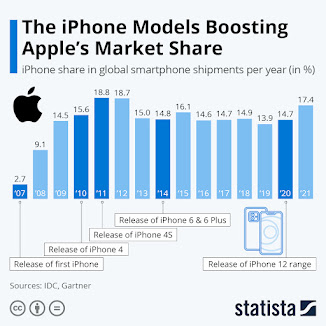Pricing Dynamics: Unveiling the Power Within
In today’s ever-evolving economic landscape, businesses are confronted with a myriad of challenges—from fluctuating economic cycles to shifting consumer behaviors and rapid disruptions in business models. Amidst this complexity, certain companies consistently outshine their peers by leveraging a critical yet often overlooked element: pricing power.
At its core, pricing power refers to a company's ability to influence the demand for its products or services by adjusting prices. This concept is closely tied to the notion of price elasticity of demand, which measures the responsiveness of quantity demanded to changes in price. Simply put, higher price elasticity suggests that consumers are more sensitive to price changes, leading to lower pricing power for businesses. On the other hand, lower price elasticity indicates greater customer loyalty and a stronger competitive advantage, ultimately contributing to higher pricing power.
Building and maintaining pricing power requires a strategic approach encompassing various facets of business operations. Companies can cultivate pricing power by:
Differentiation and Branding: Offering unique products or services that provide tangible value to customers can create a competitive edge. Strong branding and customer loyalty further reinforce pricing power, allowing companies to command premium prices.
Innovation and Quality: Continuous innovation and a focus on product quality can enhance perceived value among customers, making them less price-sensitive and more inclined to pay higher prices for superior offerings.
Market Positioning and Segmentation: Targeting specific market segments and positioning products or services accordingly enables companies to tailor pricing strategies to different customer segments, maximizing revenue potential.
Cost Management and Efficiency: Efficient cost management practices help optimize profit margins, providing leeway for strategic pricing decisions while maintaining competitiveness in the market.
Customer Relationships and Service: Building strong relationships with customers through exceptional service and support can foster loyalty and a willingness to pay premium prices.
A critical aspect of pricing power lies in its impact on financial performance and investor perception. Investors often assess a company's pricing power as a key indicator of its long-term growth potential and ability to generate sustainable returns. Companies with strong pricing power are better positioned to weather economic fluctuations, as they have the flexibility to adjust prices in response to changing market conditions without significant impact on demand.
Warren Buffett's Perspective: Renowned investor Warren Buffett emphasizes pricing power as a paramount business metric, highlighting its impact on growth and investor sentiment. He underscores the significance of pricing power over management efficacy, stressing its pivotal role in shaping business dynamics.
One notable example of pricing power in action is Apple's iPhone. Despite entering a competitive market, Apple established itself as a premium brand with high pricing power, driven by innovation, quality, and a loyal customer base. This allowed Apple to maintain premium pricing and profitability even as competitors emerged, highlighting the resilience conferred by pricing power.
In the Indian market, companies like Page Industries (Jockey) and Vedant Fashions (Manyavar) have demonstrated robust pricing power by offering differentiated products and building strong brand loyalty. Despite market dynamics, these companies have sustained profitability and market leadership through strategic pricing strategies.
Moreover, pricing power extends beyond product pricing to encompass broader business strategies such as supply chain management, distribution channels, and payment terms. Companies adept at managing these aspects effectively can further enhance their pricing power and competitive advantage.
While pricing power is a critical component of business success, it is not without challenges. Inflationary pressures, supply chain disruptions, and competitive forces can all impact pricing dynamics and erode pricing power if not managed effectively. Companies must continuously evaluate market trends, customer preferences, and the competitive landscape to adapt their pricing strategies accordingly and maintain pricing power over time.
In conclusion, pricing power is a fundamental driver of sustainable business growth and profitability. By understanding and harnessing the factors that contribute to pricing power, companies can create enduring value for stakeholders, build resilience in volatile markets, and secure a competitive edge in the long run.




Comments
Post a Comment